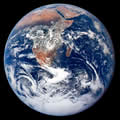SRSP 16-19 Topic 4 Unit 1b – The Anthropic Principle
This unit aims to help students understand some of the arguments concerning the design of the universe and the possibility of this having been the result of a deliberate creation by a designer God.
They will look at the nature of the anthropic principle and the weak and strong anthropic arguments. These will be compared to the scientific process of looking for causality. There will be opportunities to apply these principles to different scenarios through a role play game. One lesson considers the possibility of extra-terrestrial intelligence and its implications for theological doctrines.
This unit consists of 3 lessons and is suitable for students aged from 16 to 19 years
Key Questions
- Is the universe as we know it the result of the actions of a designer God?
- Does the nature of the universe inevitably lead to the existence of intelligent life?
- Is the search for causal explanation the only way to carry out valid research?
- How convincing is the evidence for the existence of extraterrestrial intelligence?
- Can we still believe in God if there is intelligent life elsewhere in the universe?
Some of the materials can be viewed on screen and some can be downloaded for editing or printing. To view the pdf files you need Adobe Acrobat Reader. See the about section for more details.
Unit Resources
Link to Seth Shostak video [Need to be online]
Lesson 1
Lesson Plan: Introduction to the Anthropic argument and Causal Arguments (Word)
Student Resource Sheet 1: Anthropic Arguments (PPT)
Student Resource Sheet 2: Cosmological Consequences (Word)
Student Resource Sheet 3: Anthropic Arguments (Word)
Student Resource Sheet 3[LA]: Anthropic Arguments (Word)
Student Resource Sheet 4: Quotations “Anthropacisms” (Word)
Lesson 2
Lesson Plan: Anthropic Arguments (Word)
Lesson 3
Lesson Plan: Extraterrestrial Intelligence (Word)
Student Resource Sheet 5: SETI, The Search for Extra Terrestrial Intelligence (PPT)





